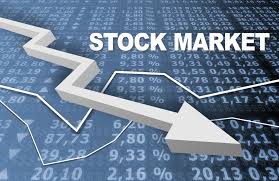The 5 Best Chinese Stocks to Buy Now

In most American households, the washing machine keeps a low profile. Consumers may want their washer to be energy-efficient, water-saving, or even “smart,” but they don’t care how it looks. Not so in China, where a washer is a sign that you’ve arrived economically—especially if it’s stylish. That explains the aesthetic of Wuxi Little Swan. The appliance company sells a gold washing machine dubbed “Killer” that looks like a retro robot, along with a portable Mickey Mouse washer for new parents. It has ridden its apartment-friendly designs to become China’s second-biggest seller of washing machines, with sales of about $ 2.4 billion in 2016.
Before long, many more U.S. investors will get a chance to clean up on companies like Little Swan. This summer, MSCI, one of the most prominent creators of investment indexes, added “A-shares”—stocks that trade only on China’s domestic exchanges—to its emerging-markets index. The move was an acknowledgment that more Chinese companies meet international standards for accounting transparency and liquidity. And it means that, beginning next May, 222 A-shares like Little Swan will join investors’ portfolios for the first time, via their emerging-markets index and exchange-traded funds.
That’s a gravitational shift. Currently, most Chinese stocks owned by U.S. investors trade either on U.S. exchanges or in Hong Kong. Although China’s main domestic exchanges, in Shanghai and Shenzhen, account for nearly 10% of the global stock universe, U.S. shareholders owned only $ 103.6 billion worth of Chinese-traded stocks in 2016, a tiny fraction of their total holdings. But that number is expected to grow exponentially in the wake of MSCI’s move, and some investors are pouncing on A-share stocks today, assuming they’ll enjoy a price bump when money from index funds pours in.
Should you follow suit? Skeptics note that this isn’t the ideal time to buy Chinese equities. China’s frothy housing market and its escalating debt, which reached 260% of GDP at the end of 2016, have stoked fears of a looming slump. Its markets are also more volatile than America’s, in part because they’re dominated by individuals rather than by the banks, funds, and other institutions that rule in the U.S. Still, seasoned investors see opportunity in the A-shares—and other stocks too—among Chinese companies that are poised to ride out any short-term rockiness.
China’s transition to an economy driven by consumer spending rather than industrial growth is generating much of that opportunity. Many of the most affluent consumers will gather in tight-packed urban centers—an argument for the aforementioned Wuxi Little Swan, which customizes products by size and builds all-in-one washer-dryers that fit nicely in small apartments. Equally appealing to investors, explains Tiffany Hsiao, portfolio manager on the China team for mutual fund firm Matthews Asia, is that Little Swan’s build-on-request business model reduces its need to take on debt.
Albert Kwok, emerging-markets portfolio manager for Jennison Associates, expects Chinese health care spending to rise along with the country’s affluence. While health care represented 17.1% of U.S. GDP in 2014—the latest year for which World Bank data is available—it accounted for just 5.5% of China’s. Kwok also thinks China will be successful at innovating in the health care space. “They have [seen] the mess we have created” in the U.S., Kwok says. “And they don’t want to follow us.” Such trends could benefit the financial holding company Ping An Insurance (pngay). Ping An’s diverse suite of services has helped it gather financial and health data on more than 800 million people—which should enable it to more effectively price its health care coverage. Among its innovations, notes Rich Thies of Driehaus Capital Investments: a popular app that enables users to connect with clinics and pay medical bills online.
Not all A-share stocks cater solely to China’s domestic market. Thies also likes Hangzhou Hikvision, a surveillance-camera maker worth $ 41 billion. China’s low manufacturing costs give the company an edge internationally, and its revenue from outside China rose eightfold between 2012 and 2016, to $ 1.4 billion. And Hikvision dedicates an impressive 8% of revenue to research and development.
Investors can also bet on Chinese consumers through stocks that already trade globally. The Internet giants Alibaba (baba) and Tencent (tcehy) dominate China’s online ecosystems, offering multipurpose apps for shopping, gaming, and e-payments. Tencent has some 900 million active users, while Alibaba controls 70% of the country’s e-commerce market. But each could do much more to monetize its reach through advertising, says Nick Beecroft, equity portfolio specialist for T. Rowe Price in Hong Kong—meaning each has potential for huge new revenue gains.
Jennison’s Kwok thinks that kind of lucrative leap is inevitable for China’s tech giants. Chinese consumers are ahead of the technological curve, he argues, because the country jumped into the Digital Age just as they were gaining spending power. “China is now used to fast adopters in e-commerce, e-payments, and more,” he says. And fast adoption can mean rapid growth for the companies that tap into it.
A version of this article appears in the Aug. 1, 2017 issue of Fortune with the headline “Where Bulls Are China-Shopping.”


